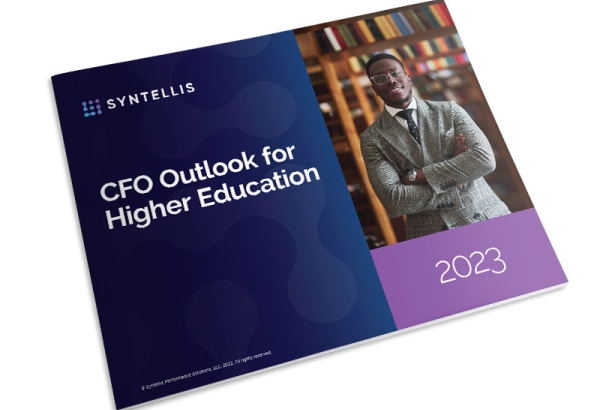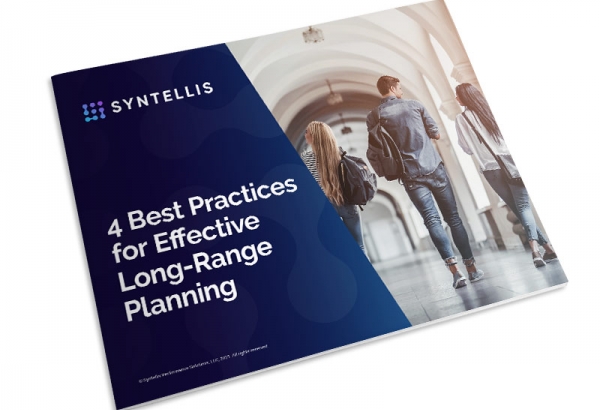The disruptions of recent years have had lasting effects in higher education, forever changing the way colleges and universities operate. Many institutions face ongoing repercussions including low enrollment, rising costs, hiring challenges, and a shift from in-person to hybrid or remote working and learning environments.
To explore the financial and operational impacts, we recently spoke with Renaldo Domoney, Assistant Vice President for Budget, Finance, and Analytics at Western Kentucky University (WKU), and Anthony Mutti, Chief Information Officer at Springfield College. They provided insights on how their operations have changed, and what colleges and universities can do to create a more sustainable future.
Q: What were the greatest financial and operational impacts of the past few years on your campus?
Domoney said that prior to 2020, the admissions office spent a lot of time during recruitment educating parents and potential students — especially those from underserved communities — about the benefits of higher education. As social distancing took effect during the height of the COVID-19 pandemic, they backed off those types of in-person recruiting sessions. “We fell behind quite a lot,” says Domoney, alluding to implications on enrollment. “In terms of operations, that certainly had the biggest impact on our campus.”
Springfield College also saw enrollment rates decrease, which directly impacted the institution’s financial planning. “That’s something that a four-year institution is going to carry through, and you are going to see it impact the budget for three more years,” says Mutti. “We have to make sure our budget adjusts properly.”
Q: How have events over the past few years shaped your institution’s view of financial technology?
“It really exposed our legacy systems,” says Domoney, elaborating that their previous system made it difficult to access accurate and timely information. “Maybe a month before the pandemic, we were looking at a different budgeting software to improve our technology on the finance side. COVID reassured us that, yes, this is the right thing to do. That was a positive impact for sure; we’ve really honed in on technology, and we’re happy to invest in it and understand its importance.”
Mutti agreed. “The pandemic surfaced all the holes in the processes we had and our reliance on a lot of paper and manual processes,” he shares. “We were already starting to think about moving to a new financial system and replacing our entire enterprise resource planning (ERP) application. It became very clear that we needed to move forward. The college needed a full digital transformation.”
Overall, Mutti says the events of the last few years pushed Springfield College to innovate and adopt technology at a faster pace than it did before. “You can't stagnate in these kinds of situations,” he says. “You have to keep pushing forward and innovating and turning that crisis into an opportunity. And I think that's something that we really embraced as a whole institution.”
Q: What has your institution’s return to normal looked like, and what will be forever different about your operations?
“Springfield College is definitely moving toward a digital-first environment,” says Mutti. “We are automating as much as we possibly can.”
Having efficient processes is especially important as the entire higher education industry faces hiring difficulties due to long-running nationwide workforce shortages. “One of the ways that you can mitigate some of those difficulties is to find opportunities to simplify and automate processes,” Mutti adds.
Offering a remote or hybrid work environment can also help address labor challenges. “It opens up opportunities for us to have a greater pool of talent to choose from if we're working remotely,” explains Mutti. “If we can find talent that's competitively priced in a different location and remote work is one benefit that they find attractive, then that's an advantage we should push.”
Colleges and universities across the country are increasingly embracing technology without looking back. “I've noticed our faculty is definitely leveraging online tools a lot more,” Domoney says. “Across the board, everyone has embraced technology, whereas in the past, people maybe shied away a little bit or any change was just really, really slow.”
Q: What are you doing to drive long-term sustainability and financial or operational health at your institution?
WKU recently implemented a new decentralized, incentive-based budget model. “I think that’s going to be important for our sustainability going forward for a couple of reasons,” Domoney says. It not only puts accountability on deans and department chairs but also incentivizes the institution’s priorities, such as enrollment, research, or other goals.
In addition, WKU will use Syntellis’ AxiomTM Higher Education Suite to develop long-term financial plans. “That allows us to be proactive, rather than reactive,” Domoney says, explaining that Axiom will empower the school to focus on enrollment, growth, and new programs.
Mutti also emphasizes the importance of a solid, long-term financial plan. “We want to make sure we remain nimble and adaptable,” he says. “We want to look for opportunities to invest and try not to be unnecessarily risk-averse.”
Rather than constantly deferring expenses, a long-term financial plan allows institutions to work toward their vision for the future. “It’s not easy and it takes great tools and a lot of analytics,” he shares. But with the right data, you can take appropriate risks that will provide great opportunities for the future.
With data-driven, long-range financial planning, college and university leaders can make more informed decisions about growth initiatives in the face of changing circumstances. Such an approach provides visibility into financial impacts over the long term, so institutions are better equipped to take appropriate risks and maintain sustainable growth for years to come.
Learn more about the Axiom Higher Education Suite or request a demo.
Read more on improving financial growth for higher ed

CFO Outlook for Higher Education

Three Best Practices for Developing Sound Tuition Pricing Strategies


